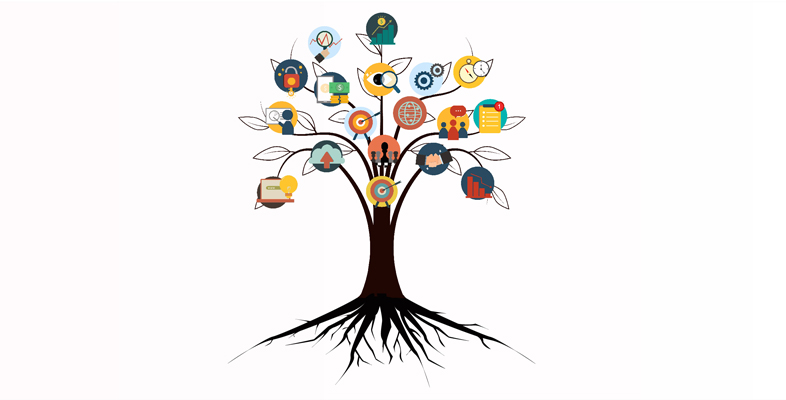The Big Five Model
The match between personality traits and successful career development is unique and context-specific, which means that the traits that serve an enterprise manager well in one setting may not be the most appropriate for another enterprise manager in a different setting. Academic research in the area of organisational psychology has provided a rich understanding of the depth and variety of personality traits that can help us to understand and possibly manage behaviour in the workplace.
One of the most popular models of personality traits that appears to be validated empirically across time, contexts and cultures is the Big Five Model, also known as the Five Factor model. The model comprises five broad personality dimensions: Openness to experience, Conscientiousness, Extraversion, Agreeableness and Neuroticism, and so the acronyms OCEAN or CANOE are often used. Understanding the impact of these dimensions on organisational and individual behaviour and performance is important for people management in organisations. Numerous authors (for example, Costa and McCrae, 1988; Specht et al., 2011; Toegel and Barsoux, 2012) have discussed these five broad dimensions.
- Openness to experience: this dimension includes people’s tendency to appreciate art; to be intellectually curious, creative or imaginative; to pursue novelty; or to prefer change over stability. High openness to experience can also be an indicator of a lack of focus and consistency. Low openness to experience can be perceived as being overly cautious or dogmatic.
- Conscientiousness: this dimension refers to people’s tendency to be organised; to be perfectionists; to focus on details and achievement; and to be self-disciplined. High levels of conscientiousness may also result in focusing too much on details and losing the bigger picture. Low levels of conscientiousness can be perceived as being flexible or possessing a lack of control.
- Extraversion: this dimension refers to people’s tendency to be energetic; to be sociable or talkative; to pursue excitement; and to exude warmth. High extraversion may reflect assertiveness and a desire to experience positive emotions or attention seeking. Low extraversion may be perceived as being reserved, self-reflective or having a tendency for being self-absorbed and aloof.
- Agreeableness: this dimension refers to people’s tendency to get along with others, avoid conflict and be friendly, helpful, compassionate and cooperative. High agreeableness may result in being perceived as naïve or submissive. Low agreeableness involves voicing criticism, but it may also be perceived as being competitive and untrustworthy.
- Neuroticism: this dimension refers to people’s tendency to be sensitive, nervous, anxious and vulnerable, or to generally experience a variety of unpleasant emotions. Low neuroticism may reflect emotional stability, a calm personality or one with low concern. High neuroticism may be perceived as anger or impatience, but it can also convey confidence.
These five dimensions provide a strong theoretical foundation in personality psychology and suggest a possibility for explaining potential behaviour and performance in the workplace. Actual behaviour and performance are also dependent on, and impacted by, situational variables, such as the characteristics of the job, the culture of the organisation, relationships with co-workers and the resources provided. You will use the Big Five Model in the next part of Activity 3 to reflect on your understanding of your personality traits, and identify a number of distinctive strengths and competencies, as well as weaknesses and areas for development.
Activity 3: Part 2 Understanding your personality traits: the Big Five Model
Note: we recommend you complete this activity in Chrome or FireFox.
1. Assess your personality traits by completing the following questionnaire, which is based on the Big Five model.
2. Now write a paragraph of about 100 words in which you reflect on your results from the self-assessment quiz. Your reflection should compare your self-assessed scores with what you thought about yourself before you completed the questionnaire. It should also include your thoughts on whether your personality traits can be seen as an appropriate predictor of your performance.
Feedback
You will find that by studying the Big Five Model, assessing your personality traits and reflecting on the results, you will have a good background about how personality traits can affect your behaviour and performance. When you analyse yourself on each dimension, note that it shows only a possibility for explaining potential behaviour and performance, which are also dependent on, and impacted by, situational variables, such as job characteristics, organisational culture and co-workers.
You could use your notes from this activity to produce a short narrative on what personal development planning means for you and how you can work with others in undertaking sustainable innovation and enterprise development in your future work context.
